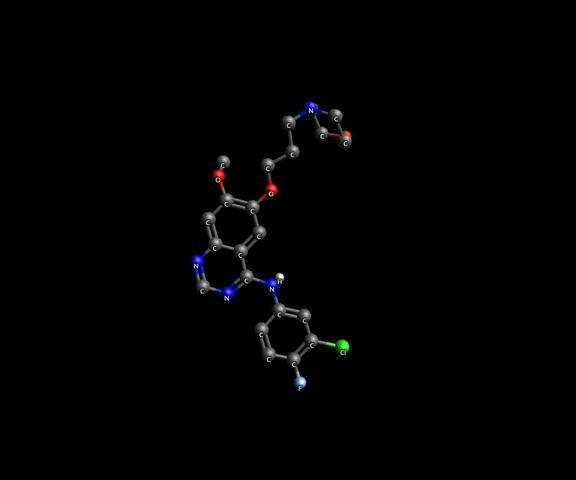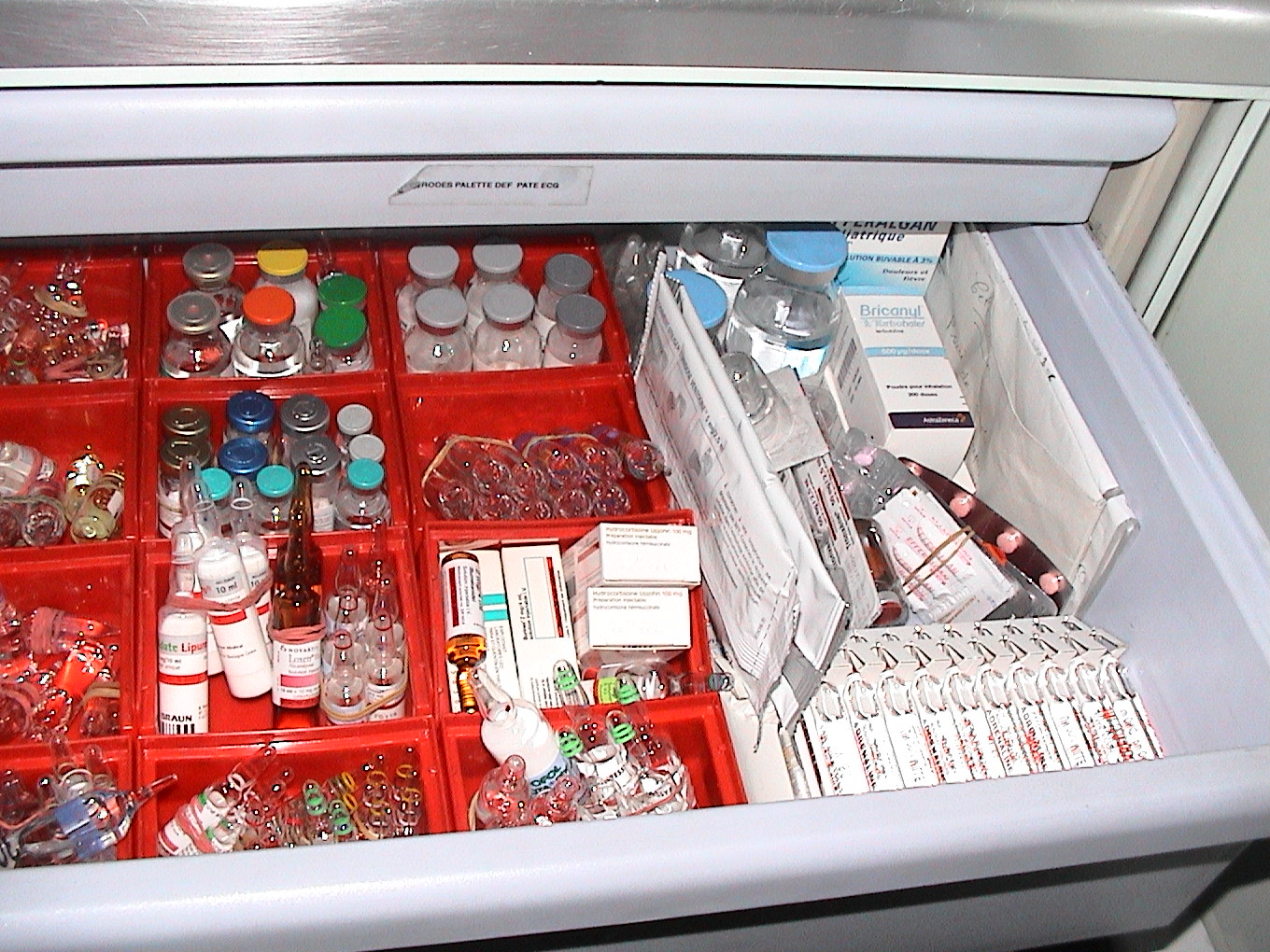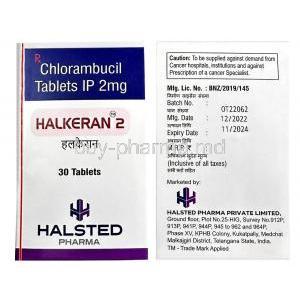Gefitinib
- I. Introduction
- II. Uses of Gefitinib
- III. How Gefitinib Works
- IV. Dosage and Administration
- V. Composition
- VI. Side Effects of Gefitinib
- VII. Off-label Use of Gefitinib
- VIII. Interactions with Other Drugs and Substances
- IX. Warnings and Contraindications
- X. Careful Administration and Important Precautions
- XI. Special Populations: Administration Considerations
- XII. Overdosage and Management
- XIII. Storage and Handling Precautions
I. Introduction
Gefitinib, a medication in the field of cancer treatment, was developed during the later years of the 20th century. Despite being overshadowed by other emerging compounds, its exceptional effectiveness in targeting specific cancer mutations propelled it into the spotlight. In todays world, Gefitinib is seen as a testament to the sciences' capacity to combat life-threatening diseases and as a symbol of precision medicine's potential.
II. Uses of Gefitinib
a. Primary approved uses in cancer therapy
Gefitinib is a tyrosine kinase inhibitor that has been approved to treat non-small cell lung cancer (NSCLC) that has metastasized (spread to other parts of the body) 1. It is used as first-line treatment in patients whose tumors have specific epidermal growth factor receptor (EGFR) exon 19 deletions or exon 21 (L858R) substitution mutations as detected by an FDA-approved test 2. Gefitinib is also being studied in the treatment of other types of cancer 1.
Studies have shown that gefitinib is highly effective in fighting against NSCLC, which is known for its aggressive nature and tendency to be diagnosed at an advanced stage 3. It provides a solution especially in cases where the cancer shows specific mutations, particularly in the EGFR gene or when patients have tumors that are more responsive to tyrosine kinase inhibitors 34.
References:
2: Drugs.com 3: National Cancer Institute 1: DrugBank Online 4: European Respiratory Review
b. Other cancers and diseases where it has demonstrated efficacy
Studies have shown that gefitinib may be effective against breast cancer and specific head and neck cancers 34. Although these cancers are not the focus, these findings strengthen gefitinib’s position in the wider field of oncology.
References:
2: Drugs.com 3: National Cancer Institute 1: DrugBank Online 4: Medical News Today
III. How Gefitinib Works
Gefitinibs' primary mechanism revolves around its ability to disrupt the signaling of cancer cells. Let's delve deeper into this. On a level, Gefitinib targets and attaches itself to the tyrosine kinase domain of epidermal growth factor receptors (EGFR). This attachment inhibits the activity of tyrosine kinases, which are enzymes responsible for activating various cellular functions, including cell division. As a result, tumor growth is. The spread of cancer is reduced. In terms, it prevents cancer from growing and spreading further.
IV. Dosage and Administration
It is crucial to ensure the dosing of Gefitinib to achieve optimal therapeutic benefits and minimize any potential adverse effects. Essential factors include tailoring the dosage based on the patient's condition and individual characteristics. While a standard dose is generally prescribed for NSCLC, adjustments may sometimes be required. The recommended method of administration is through intake. Patients should anticipate outcomes within a few weeks to several months, depending on the type and stage of cancer they have.
V. Composition
The formulation of Gefitinib involves finding the balance between its active component and other substances that help maintain the stability and effectiveness of the drug. The active ingredient in Gefitinib is, not surprisingly, Gefitinib itself. Along with this, some elements or substances are crucial in delivering the drug effectively and ensuring its stability. While Gefitinib is typically found in tablet form, ongoing research explores forms such as solutions.

VI. Side Effects of Gefitinib
Similar to any medication, Gefitinib also has its share of side effects. However, being aware of these effects and taking timely measures can significantly improve patients' comfort.
Common Side Effects
Some of the side effects that are often mentioned include issues such as feeling sick, throwing up, and having diarrhea. There can also be skin reactions like rashes, dryness, and itching. Respiratory symptoms, like trouble breathing and coughing, have been reported well. It's important to stay vigilant and regularly review the common and rare side effects to ensure the safety of patients.
VII. Off-label Use of Gefitinib
Gefitinib is a tyrosine kinase inhibitor that has been approved to treat non-small cell lung cancer (NSCLC) that has metastasized (spread to other parts of the body) 1. However, ongoing clinical trials and studies have shown that it has a range of applications beyond its approved uses 2.
It is important to use Gefitinib off-label with caution considering both the advantages and possible risks. To do so, we need to understand:
- The conditions where Gefitinib has demonstrated promise outside of its use.
- The supporting evidence, usually derived from trials for such uses.
- The safety and effectiveness profiles of Gefitinib in these conditions.
It is crucial to evaluate all aspects before considering off-label usage of Gefitinib.
References:
2: National Cancer Institute 1: DrugBank Online
VIII. Interactions with Other Drugs and Substances
The effectiveness and potential side effects of Gefitinib can be influenced when used alongside medications. It is essential to take an approach to patient care by considering the following: Identifying certain antibiotics and antifungals that may impact the desired range of Gefitinibs therapeutic effects—understanding how food, especially grapefruit and alcohol consumption, can affect the metabolism of Gefitinib—regularly reviewing medication lists and dietary habits to prevent any potential interactions proactively.
IX. Warnings and Contraindications
Whenever a new pharmaceutical breakthrough occurs, it also brings along a range of situations and conditions where its usage may not be recommended. In the case of Gefitinib, it is crucial to exercise caution in its administration. Instances, where the use of Gefitinib should be avoided include the use of certain medications known for causing significant drug interactions as well as during episodes of unexplained acute illnesses. Furthermore, individuals with health conditions such as chronic liver diseases, renal insufficiencies, or a history of severe hypersensitivity reactions may experience an increase in adverse effects.
X. Careful Administration and Important Precautions
Prescribing Gefitinib involves more than determining the correct dosage. It requires an approach to patient care, which includes: 1. Monitoring liver and kidney function: Regular tests for renal function can help detect any early indications of organ-related side effects. 2. Assessing cardiac effects: Given its potential impact on cardiac rhythms, periodic electrocardiograms and echocardiograms may be necessary to ensure proper monitoring. Taking these steps ensures that patients receive management throughout their treatment with Gefitinib.
XI. Special Populations: Administration Considerations
a. Administration to the Elderly
The elderly often pose a challenge because their bodies change, and they usually take multiple medications. Adjusting the dosage might be necessary due to the metabolism that comes with age. It is essential to monitor them for potential risks, such as drug-related lung inflammation and liver damage.
b. Administration to Pregnant Women and Nursing Mothers
It can be a task to weigh the advantages of therapy against the potential risks to the fetus or newborn. Current information from trials indicates that birth defects and increased neonatal health problems may be possible. This knowledge is based on animal studies and limited data from studies. When it comes to using gefitinib during pregnancy or while breastfeeding, it's generally recommended to avoid it unless the benefits significantly outweigh the risks. If it is necessary, careful monitoring is essential.
c. Administration to Children
Pediatric oncology is an area of specialization, and using medications such as Gefitinib necessitates specialized expertise. A limited number of studies suggest that Gefitinib may be effective in treating certain types of pediatric cancers. When prescribing for children, dosages often consider their body surface area. It can vary significantly from those used for adults.
XII. Overdosage and Management
Accidental overdosing requires knowledgeable interventions to prevent harmful consequences. Overdose symptoms can range from issues to severe respiratory distress. The immediate steps for managing an overdose involve hospitalization, providing care, and administering symptomatic treatments. In cases of overdosing, there may be a need for long-term monitoring and interventions due to potential organ damage.
XIII. Storage and Handling Precautions
To ensure that Gefitinib remains effective, paying attention to its storage and handling conditions is essential. It is recommended to store the medication in a dry place away from direct sunlight. When handling the drug, it is crucial to keep dry hands in its original packaging until it is used. Proper disposal of unused medication is vital for the safety of humans and the environment, preferably through pharmaceutical take-back programs.




















